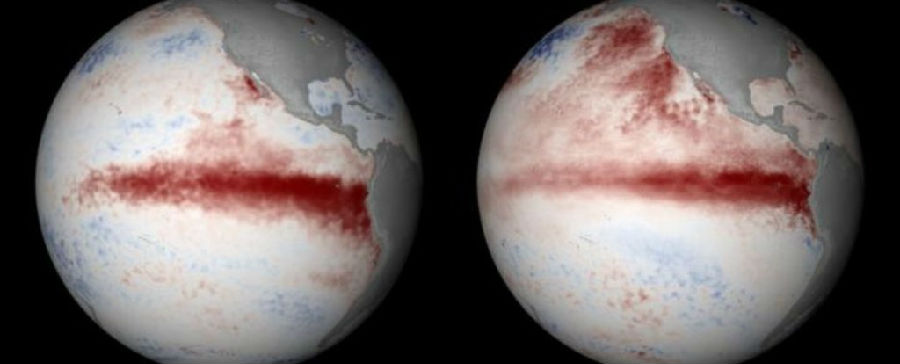If El Niños were dangerous before, they are looking to become especially destructive in the near future. Already severe and unpredictable, recent research indicates these natural weather events are now swinging to even greater extremes.
如果说厄尔尼诺以前很危险,那它在不久的将来将变得极具破坏性。最近的研究表明这些已经很严重并难以预测的自然天气现象现在正朝着更极端的方向发展。
Since humans started burning fossil fuels on an industrial scale, coral records from the past 7,000 years indicate that heat waves, wildfires, droughts, flooding and violent storms associated with El Niño have grown markedly worse.
自从人类开始大规模燃烧化石燃料,过去7,000年的珊瑚记录显示与厄尔尼诺有关的热浪、野火、干旱、洪水和猛烈风暴愈演愈烈。
It's still unclear whether this is due to climate change directly, but from the limited history we have, the pattern of both looks suspicious.
尚不清楚这与气候变化是否有直接关系,但从我们有限的历史来看,这两种模式看起来都很有问题。
"What we're seeing in the last 50 years is outside any natural variability," says earth and atmospheric scientist Kim Cobb from the Georgia Institute of Technology.
佐治亚理工学院的地球与大气科学家Kim Cobb说:“我们在过去50年里看到的已经超越了所有自然变化。”

"It leaps off the baseline. Actually, we even see this for the entire period of the industrial age."
“它突破了底线。其实在整个工业时代情况一直是这样的。”
Climate scientists have long suspected a cause-and-effect relationship between global warming and El Niño, but while some studies have shown stronger and longer events with growing global temperatures, others have found the opposite.
很久以来气候科学家一直怀疑全球变暖和厄尔尼诺之间有因果关系,但是虽然一些研究已经表明全球变暖会造成更严重更持久的自然现象,但其他研究结果恰恰相反。
The El Niño Southern Oscillation (ENSO) is a natural weather cycle that has heated and cooled the equatorial Pacific ocean for thousands of years, causing large-scale weather changes. Predicting when, where and how this pendulum will swing, however, has proved quite difficult.
厄尔尼诺-南方涛动(发生于赤道东太平洋地区的风场和海面温度震荡)是数千年来给赤道太平洋升温和降温的自然天气循环,会造成大范围的天气变化。但经证实预测这种周期变化的时间、地点和方式是相当困难的。
Usually showing up every two to seven years, El Niño events are known to cause brief spikes in global surface temperatures, whereas La Niña events trigger the opposite cooling effect.
厄尔尼诺现象通常每两年至七年出现一次,现在普遍认为它造成了全球地表温度短暂上升,而拉尼娜现象则引发了相反的降温效应。
Still, reliable ENSO measurements only go back about a century, so it's been hard to determine if these changes are 'normal' in the grand scheme of things.
但可靠的厄尔尼诺-南方涛动数值只能追溯到一百年前,所以很难确定从大范围来看这些变化是否“正常”。













